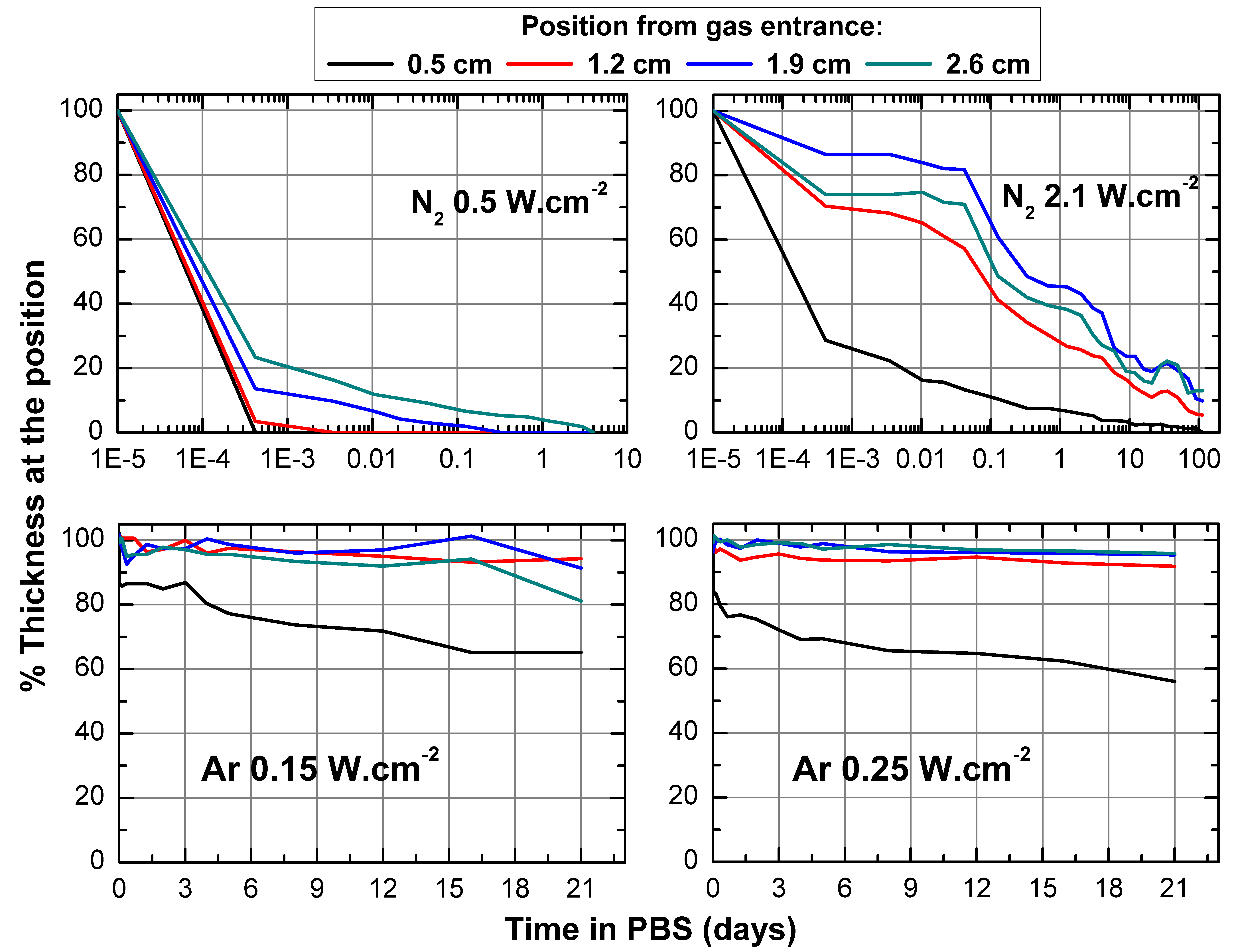Introduction: Most strategies aiming at developing biocompatible arterial prostheses target the recruitment of endothelial cells (EC) to reproduce a native artery intima. In practice, the implantation of arterial prostheses leads to neointimal hyperplasia, which is characterized by the obstruction of blood vessels due to the proliferation of smooth muscle cells (SMC) on the prosthesis wall. In vitro experiments already demonstrated the potential of some drugs to inhibit SMC proliferation while somewhat promoting EC ability to proliferate[1].
Plasma based technologies were successfully used in the past to coat biomedical devices to improve their biocompatibility[2]. The strategy consists in using plasma energy to polymerize a gaseous precursor. By selecting appropriate precursor and plasma conditions, one can build up a plasma polymer (PP) with tailored properties.
In this context, we exploited a dielectric barrier discharge (DBD) to build up a biodegradable PP to be used as drug delivery system (DDS).
Materials and Methods: Ethyl lactate was used as precursor due to its potential to form a PP resembling to poly(lactic acid). The influence of plasma power, deposition time, and carrier gas was correlated to the in vitro degradation rate of the coating. Layers were characterized by FTIR and XPS spectroscopies, while surface profilometry was used to follow the PP degradation under aqueous conditions. Cell viability experiments were carried out on EC to ascertain the applicability of this plasma based DDS.
Results: XPS showed that layers deposited under nitrogen (N2 layers) contained about 50% carbon, and up to 45% nitrogen, with the remaining consisting of oxygen. The IR spectrum (Figure 1; in red) showed the presence of nitrile, amine, and amide functionalities (through both C=O and N-H modes).

Coatings synthesized under argon (Ar layers) were made of 75% C, and 25% O, as analyzed by XPS. Ester and CH2/CH3 groups were observed through IR analyses (Figure 1; in blue).
In buffer, all coatings degraded faster at the entrance of the plasma region (Figure 2). The degradation rate seemed to decrease with great increase of the plasma power and when using Ar as carrier gas.

Viability cell tests showed that the layers are nontoxic to EC.
Discussion: N2 coatings contained mainly hydrophilic functionalities, and only a few hydrocarbon groups, which explain their fast degradation in buffer. In agreement with the formation of a more conventional polymer structure, Ar layers’ hydrocarbon structure, coupled with some hydrolysable moieties, led to a slower degradation behavior. Moreover, all layers seemed to enable the growth of EC, therefore showing the potential of plasma deposited films for vascular applications.
Conclusion: By selecting the appropriate carrier gas and adjusting the plasma power input, it is possible to adapt the deposited layer’s chemistry, and hence its degradation upon aqueous environment. This study shows the potential of DBD for the development of DDS.
Conseil franco-québécois de coopération universitaire; Pascale Chevallier (U. Laval) and Andrée-Anne Guay-Béguin (U. Laval)
References:
[1] K. Vallières, É. Petitclerc, and G. Laroche, “On the ability of imatinib mesylate to inhibit smooth muscle cell proliferation without delaying endothelialization: An in vitro study,” Vascul. Pharmacol., vol. 51, no. 1, pp. 50–56, 2009.
[2] E. Kulaga, L. Ploux, L. Balan, G. Schrodj, and V. Roucoules, “Mechanically Responsive Antibacterial Plasma Polymer Coatings for Textile Biomaterials,” Plasma Process. Polym., vol. 11, no. 1, pp. 63–79, 2014.